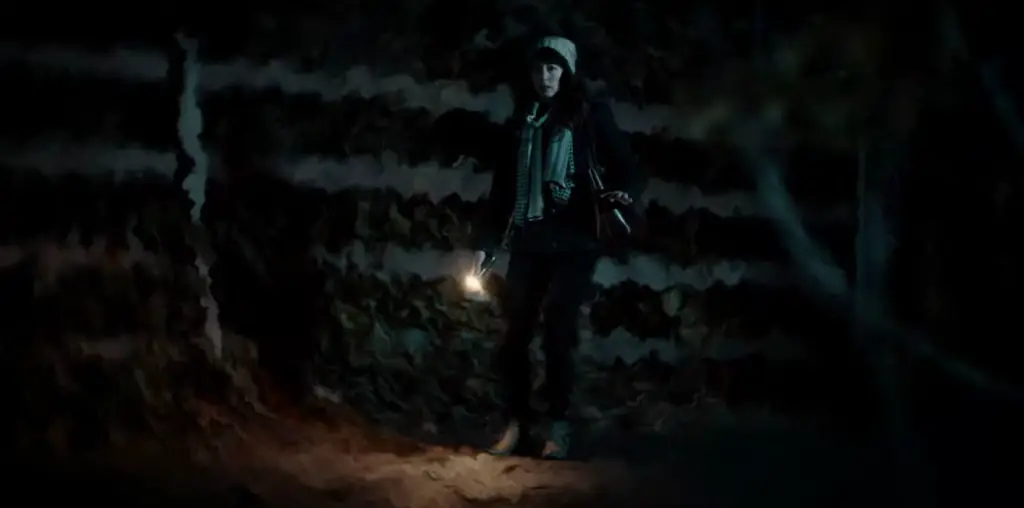
The Tao of Chuck
A number of actors have managed to parlay an entire career out of a…limited (for lack of a better word) range of emotions. Clint Eastwood was renowned early on for this particular dramatic defect, though he eventually extended his range in challenging and introspective films like “Bronco Billy” and “Pink Cadillac.” This taciturn persona has long been the particular domain of the action hero, from screen stars of yore like the aforementioned Eastwood to actioners of a more recent vintage like Kurt “Snake Plissken” Russell, Keanu “Whoa” Reeves, and the reigning Fuhrer of Frozen Facial Expressions: Arnold Schwarzenegger. Whatever the horrific task at hand: be it shooting the wrong Sarah Connor in the face or swapping innuendoes with Adrienne Barbeau, these guys can be counted on to barely even flinch.
Narrowing our classification down even further, we find this demeanor most prevalent in the martial arts genre. Bruce Lee’s feline histrionics aside, just take a look at the likes of Steven Seagal (the very epitome of bad movie Zen mastery) or Jean-Claude Van Damme, who made a manly attempt to express grief when Donald “Ogre, You A*****e” Gibb went down for the count in “Bloodsport.” But when it comes to single-minded determination coupled with stone cold bad-assery, no one comes close to Chuck Norris.
Making the decision to showcase Chuck was the easy part; it’s picking the correct vehicle that causes the real headache. And you really can’t go as far back as, say, 1972’s “Return of the Dragon.” Why not, you ask? Because while “Return’s” climactic battle between Chuck and Bruce Lee in the Coliseum is considered by many to be one of the best martial arts match-ups of all time (I remain unconvinced), it’s strictly Bruce’s baby. Die-hard fans might want to check it out just to get a look at Chuck before he started shaving his back.
Seriously. I thought it was Chuckbacca, Chewie’s older, blond brother.
Then there’s the “Missing in Action” series. But which one? Many devotees regard “Missing in Action 2: The Beginning” as superior to the original, and far be it from me to get embroiled in that debate. How about one of his early efforts, like “A Force of One” (Chuck trains the police to defend themselves against a “killer ninja”)? Or “An Eye for an Eye” (Christopher Lee and Mako in the same movie!)? In the end, it came down to two choices: 1985’s “Code of Silence,” held by many to be Chuck’s best work, and 1983’s “Lone Wolf McQuade.” In the end, I chose the latter, because while “Code” is a gritty, yet entertaining, action movie, “Lone Wolf McQuade”…has wolves. Or one wolf, anyway.
“My kind of trouble doesn’t take vacations.”
Our movie opens with Chuck, as Texas Ranger J.J. McQuade, casting his steely-eyed gaze over the West Texas desert. He’s tracking some cattle rustlers as they lead their ill-gotten herd towards the Mexican border. While he watches, a half dozen State Troopers show up to intercept the banditos, only to be quickly overpowered by the wily rustlers. Meanwhile, the rustlers’ leather-clad leader Marones (who out Guapos El Guapo from “The Three Amigos”) cackles with unholy glee. This is too much for McQuade, who puts a bullet in one of the bandits before coming down to square off with Marones mano-a-mano. This being Chuck’s movie, he single-handedly takes on 20 guys, rescues the cops, and makes it back to El Paso in time to catch the retirement of his Ranger buddy Dakota, played by L.Q. Jones. Jones looks like Kris Kristofferson with more mileage on him (if that’s possible), and was also director and co-writer of “A Boy and His Dog.” In case you cared.
The Ranger captain – get ready for this – has a problem with McQuade’s attitude. It seems our lone Ranger lacks the requisite style necessary for the Texas Rangers’ “new image.” That, and he’s too much of a…what’s the word I’m looking for…“lone wolf.” McQuade considers all this with steely-eyed wrath while the Captain introduces McQuade to his new partner, “Kayo” Ramos (Robert Beltran – Chakotay from “Star Trek: Voyager” for all you dateless wonders), who just happens to be one of the troopers McQuade rescued from El Gua…er, Marones. McQuade is somewhat less than thrilled and storms out, but the audience has to be over the moon. I mean, two cop movie clichés in under a minute? Excelsior!
There’s little time for us to celebrate, however, as we are soon whisked to the next scene which features a confrontation between a shady arms dealer by the name of Rawley Wilkes and a bunch of (also shady) Cubans in Wilkes’ arms warehouse. One of the Cubans makes the mistake of pulling a gun on Wilkes, proving once again that you should never slap leather with a guy who owns an arms warehouse. This exchange capably establishes Wilkes as the antagonist, a decision rendered even more delicious by the casting of David Carradine in the role.
The story continues in part two of FOOTAGE FETISHES: “LONE WOLF MCQUADE”>>>
Discuss Pete Vonder Haar’s “Footage Fetishes” column in Film Threat’s BACK TALK section! Click here>>>
